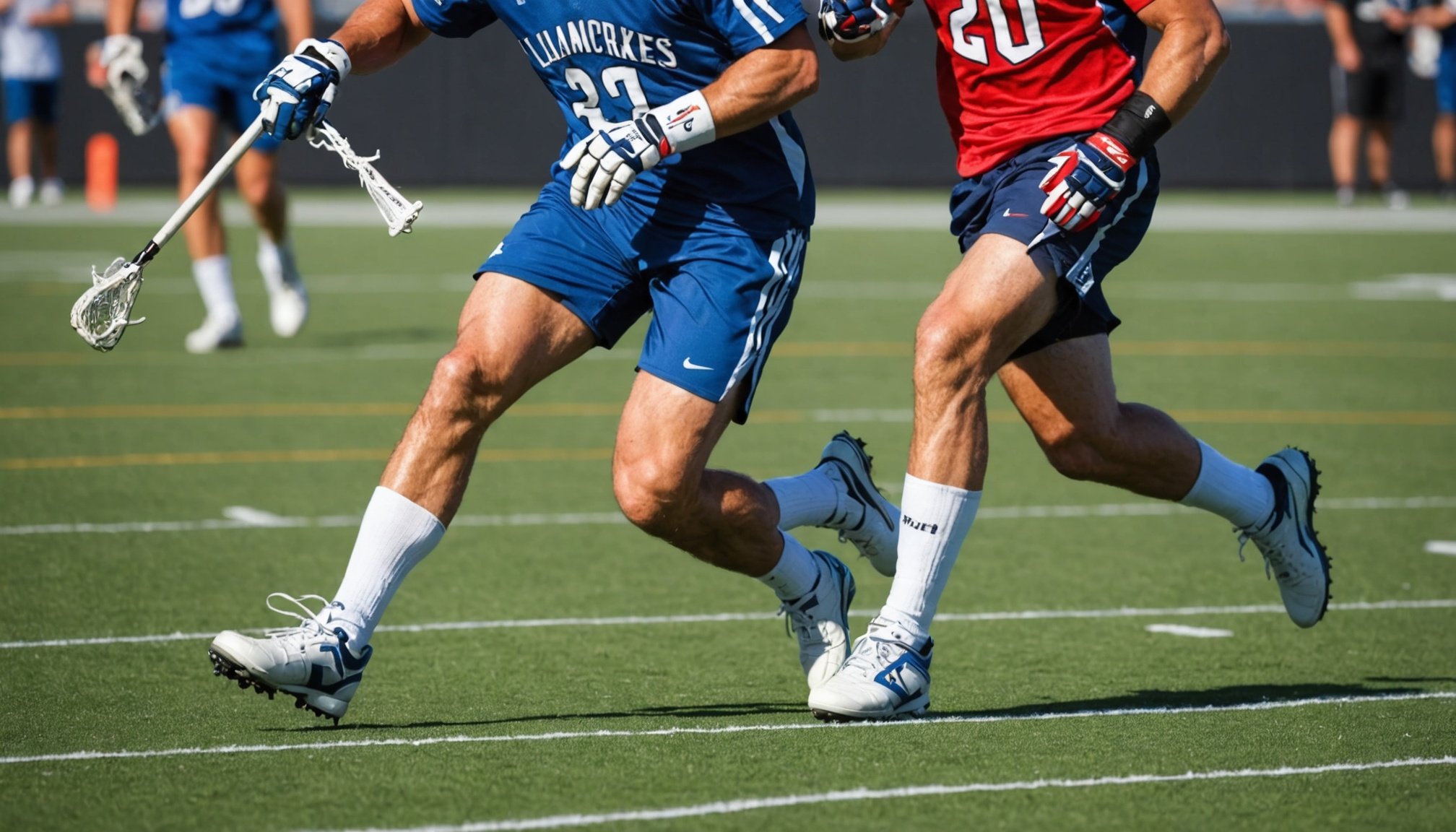Top Strategies for Professional Lacrosse Players to Prevent and Manage Hamstring Injuries
Hamstring injuries are a common plight for many athletes, particularly those involved in high-intensity, high-speed sports like lacrosse. For professional lacrosse players, preventing and managing these injuries is crucial to maintaining performance and avoiding lengthy recovery periods. Here’s a comprehensive guide on the top strategies to help lacrosse players protect their hamstrings and get back to the game quickly if an injury does occur.
Understanding Hamstring Injuries
Before diving into prevention and management strategies, it’s essential to understand the nature of hamstring injuries. Hamstring strains, which are tears in the hamstring muscles, are among the most common injuries in sports. These injuries can range from mild (grade 1) to severe (grade 3), with the latter involving significant muscle tears that may require surgical intervention.
Also to discover : Elevate Your Performance: The Impact of Altitude Training on Marathon Runners
Mechanisms and Risk Factors
Hamstring injuries often occur during activities that involve rapid acceleration, deceleration, or changes in direction. Factors such as inadequate warm-up, poor flexibility, and previous hamstring injuries can increase the risk of suffering a hamstring strain. Additionally, high training loads and insufficient recovery time can exacerbate the risk.
Prevention Strategies
Preventing hamstring injuries is always better than treating them. Here are some key strategies to help lacrosse players reduce their risk.
Also read : Unlocking Speed: Effective Interval Training Techniques for Cyclists to Enhance Time Trial Performance
Warm-Up and Cool-Down Routines
A thorough warm-up is critical before any physical activity. This should include dynamic stretching, such as leg swings, lunges, and high knees, to prepare the muscles for intense movement. After the game or practice, a cool-down routine with static stretches can help reduce muscle tension and improve flexibility.
Eccentric Training
Eccentric training, which involves lengthening the muscle under load, is highly effective in strengthening the hamstrings and reducing the risk of injury. Exercises like the Nordic hamstring curl and eccentric deadlifts are particularly beneficial. Here’s a detailed list of eccentric exercises:
- Nordic Hamstring Curl: This exercise involves kneeling on a mat with your feet anchored and slowly lowering your torso towards the ground.
- Eccentric Deadlifts: Focus on the lowering phase of the deadlift, taking 3-5 seconds to lower the weight to the ground.
- Glute-Ham Raises: These target both the glutes and hamstrings, enhancing overall lower extremity strength.
Flexibility and Mobility
Maintaining good flexibility and mobility is vital for preventing hamstring injuries. Regular stretching and foam rolling can help improve range of motion and reduce muscle stiffness. Here’s a sample stretching routine:
- Standing Hamstring Stretch: Stand with your feet shoulder-width apart, then bend forward at the hips to stretch the back of your legs.
- Seated Hamstring Stretch: Sit on the floor with your legs straight out in front of you, then lean forward to stretch your hamstrings.
- Foam Rolling: Use a foam roller to roll out your hamstrings, glutes, and calves to improve muscle recovery and reduce soreness.
Balanced Training Load
Ensuring a balanced training load is crucial. Avoid sudden increases in training intensity or volume, as this can significantly increase the risk of injury. Gradually increase your training load over time, allowing your muscles to adapt.
Management Strategies
If a hamstring injury does occur, proper management is key to a swift and effective recovery.
Acute Phase Management
In the immediate aftermath of a hamstring injury, the focus should be on reducing pain and inflammation. Here are some steps to take:
- RICE Principle: Rest, Ice, Compression, and Elevation can help reduce swelling and pain.
- Pain Management: Use over-the-counter pain relievers like ibuprofen or acetaminophen as directed to manage pain.
- Physical Therapy: Early physical therapy can help in the healing process by promoting blood flow and reducing muscle atrophy.
Rehabilitation Exercises
Once the acute phase has passed, rehabilitation exercises become crucial for restoring strength and function. Here are some exercises to include in your rehabilitation program:
- Isometric Contractions: Start with isometric contractions of the hamstrings to maintain strength without putting excessive strain on the injured muscle.
- Progressive Resistance Exercises: Gradually introduce resistance exercises like leg curls and deadlifts to strengthen the hamstrings.
- Functional Training: Incorporate functional training that mimics the movements of lacrosse, such as sprinting and changing direction, to prepare the muscle for return to play.
Return to Play
Returning to play after a hamstring injury requires careful consideration to avoid re-injury.
Criteria for Return
Before returning to play, ensure you meet the following criteria:
- Pain-Free Movement: You should be able to perform all movements without significant pain.
- Full Range of Motion: You should have full range of motion in your hamstrings.
- Strength and Power: Your strength and power should be comparable to the uninjured side.
- Functional Tests: Pass functional tests that simulate the demands of lacrosse, such as sprinting and agility drills.
Gradual Return
When returning to play, do so gradually. Start with light practices and gradually increase the intensity and duration over time. Here’s an example of a gradual return plan:
| Week | Activity Level |
|---|---|
| 1 | Light jogging, stretching |
| 2 | Moderate running, agility drills |
| 3 | Full practice with reduced intensity |
| 4 | Full practice with normal intensity |
Case Studies and Expert Insights
Understanding how professional athletes and coaches approach hamstring injury prevention and management can provide valuable insights.
Marshon Lattimore’s Experience
Marshon Lattimore, a professional football player, recently dealt with a hamstring injury that kept him off the field. His experience highlights the importance of patience and thorough rehabilitation.
“He’s what you want in a corner,” said Adam Peters, General Manager of the Washington Commanders. “He’s a really, really smart player, he is a really instinctive player, he’s physical and those are things we’re looking for. He’s just a really good football player all around.” Lattimore’s approach to recovery involved careful monitoring by trainers and a gradual return to practice, ensuring he was fully ready before returning to play.
Expert Advice
Experts in sports medicine emphasize the importance of a holistic approach to injury prevention and management.
“There’s so much he can do,” said Jeremy Chinn, safety for the Washington Commanders, referring to the versatility of players like Lattimore. “We could put him in man, in zone. He can get into our whole playbook and really do a lot of different things.” This versatility is also applicable to training programs, which should include a variety of exercises to strengthen different muscle groups and improve overall physical fitness.
Hamstring injuries are a significant concern for professional lacrosse players, but with the right strategies, they can be prevented and managed effectively. By focusing on eccentric training, maintaining flexibility and mobility, ensuring a balanced training load, and following a structured rehabilitation program, players can reduce their risk of injury and ensure a swift return to play if an injury does occur.
Practical Tips for Lacrosse Players
- Stay Flexible: Regular stretching and foam rolling can help maintain flexibility and reduce muscle stiffness.
- Train Smart: Avoid sudden increases in training intensity or volume, and include eccentric training in your routine.
- Listen to Your Body: If you experience pain or discomfort, stop and seek medical advice to avoid exacerbating the injury.
- Seek Professional Help: Work with physical therapists and trainers to develop a personalized rehabilitation program.
By following these strategies and staying informed through resources like PubMed and Google Scholar, lacrosse players can protect their hamstrings and perform at their best on the field. Remember, prevention and proper management are key to a long and healthy athletic career.











